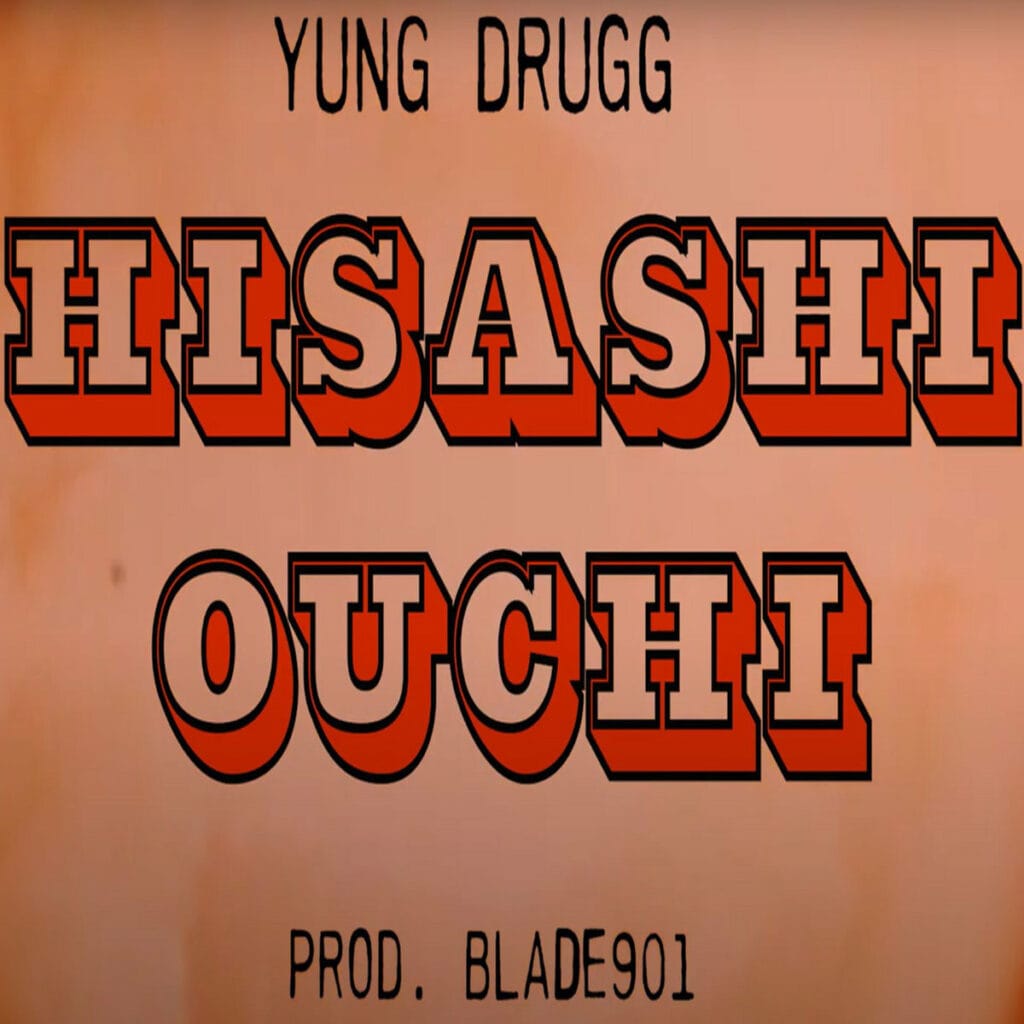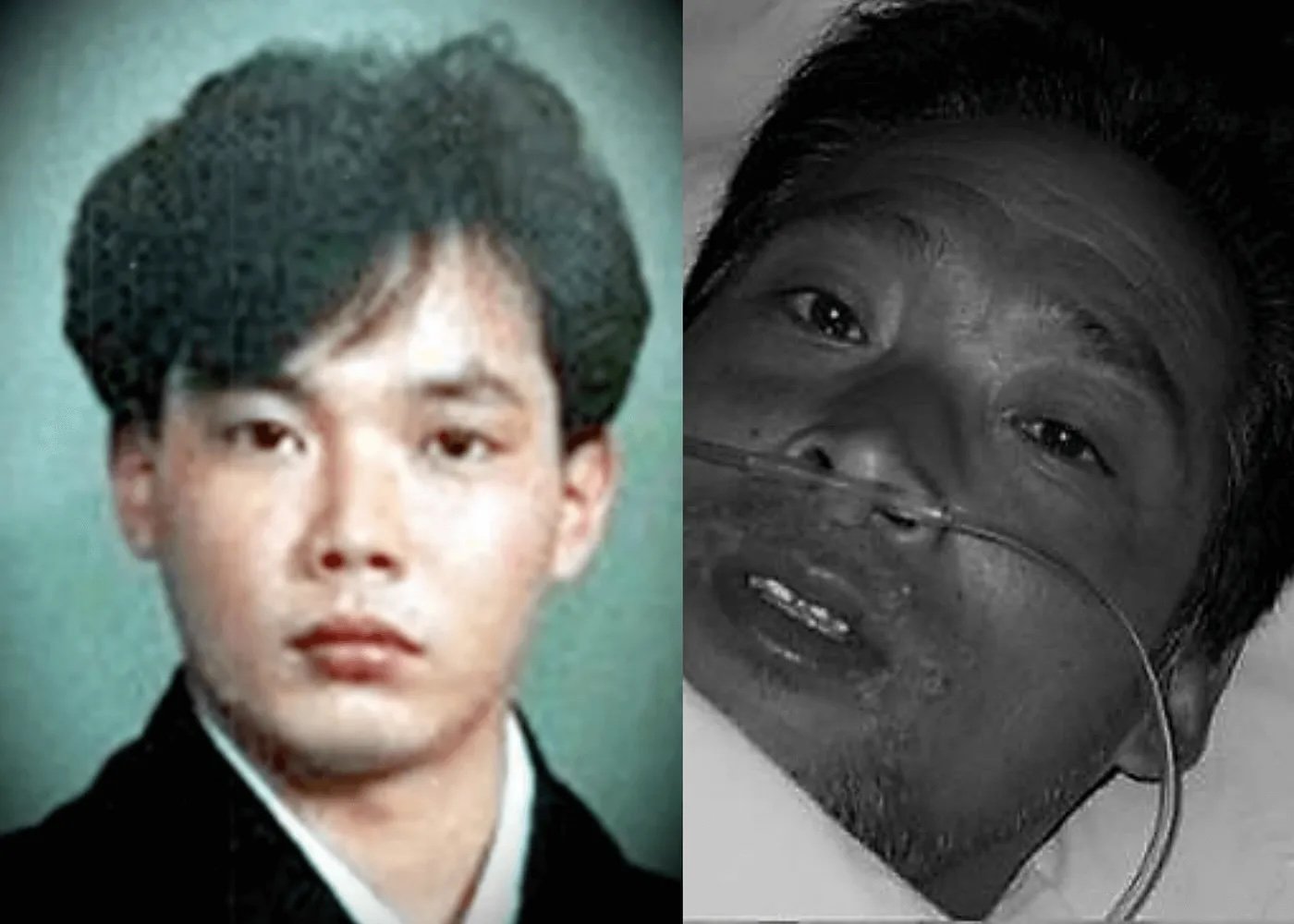Hisashi Ouchi Real Photo: Remembering A Tragic Nuclear Accident
Sometimes, a single moment can alter a life forever, and for Hisashi Ouchi, a Japanese lab technician, that moment arrived on September 30, 1999. It was a day that etched his name into history, though not for any achievement, but for suffering some of the most horrific radiation burns ever recorded. Many people, you know, search for "Hisashi Ouchi real photo" because they want to grasp the true extent of what happened. This story, really, is a stark reminder of the immense power and potential dangers tied to nuclear energy, and the human cost involved when things go wrong.
The incident at the Tokaimura nuclear power plant that day was a truly devastating event. It brought Hisashi Ouchi into the public eye as the "radioactive man," a title that, in a way, speaks volumes about the terrible ordeal he went through. For 83 agonizing days, he lived with injuries that were, in some respects, beyond comprehension, pushing the boundaries of medical intervention and human endurance. It's a very challenging story to hear, and it makes you think.
This article will explore the story of Hisashi Ouchi, touching upon the accident itself, the incredible suffering he endured, and the lasting impact of his case. We'll also consider the widespread interest in seeing "Hisashi Ouchi real photo" and why such images, while sought after, carry a heavy weight of ethical consideration. So, let's take a closer look at this important, if deeply sad, piece of history, and what it teaches us about safety and human fragility.
Table of Contents
- Hisashi Ouchi: A Life Changed
- The Tokaimura Accident: A Day That Changed Everything
- The Agonizing 83 Days
- The Enduring Impact and Lessons
- Frequently Asked Questions
Hisashi Ouchi: A Life Changed
Hisashi Ouchi was, basically, a Japanese lab technician. He was just doing his job at the Tokaimura nuclear power plant in 1999, much like countless others around the world who work in similar facilities. What happened to him was, in a way, an almost unimaginable tragedy, one that brought to light the truly devastating potential of radiation exposure. His story, you know, became a cautionary tale, discussed by medical professionals and safety experts for years to come.
Biography at a Glance
| Detail | Information |
|---|---|
| Name | Hisashi Ouchi |
| Occupation | Lab Technician |
| Employer | Tokaimura Nuclear Power Plant, Japan |
| Date of Incident | September 30, 1999 |
| Cause of Injury | Critical levels of radiation exposure |
| Duration of Survival Post-Incident | 83 days |
| Known As | 'Radioactive Man' |
The Man Behind the Name
It's interesting, in a way, that his name, Hisashi, actually has a meaning that seems almost to hint at his fate. Hisashi, you see, roughly means "a long time ago" in Japanese. This is a reference, apparently, to the phrase "hisashiburi" (久しぶり), which means "it has been a while (since I last saw you)." This linguistic connection, while perhaps just a coincidence, does add a layer of poetic, if tragic, resonance to his story, suggesting a long passage of time since things were normal for him. It's a bit of a somber thought, isn't it?
The Tokaimura Accident: A Day That Changed Everything
The year 1999 was, in many ways, just like any other year for most people. But for Hisashi Ouchi and his colleagues, it would become the year that marked a profound and terrible turning point. The Tokaimura nuclear power plant, located in Japan, was the site of an incident that would shock the world and leave an indelible mark on the history of nuclear safety. It was a very serious event, one that truly highlighted the risks involved.
September 30, 1999: The Criticality Incident
On September 30, 1999, Hisashi Ouchi showed up for work, just like he always did. Along with colleagues Masato Shinohara, he was involved in preparing nuclear fuel. However, a critical error occurred during this process. The workers were mixing a solution of uranium in a precipitation tank when, apparently, too much uranium was added. This caused a self-sustaining nuclear chain reaction, also known as a criticality accident, to begin. It was, essentially, an uncontrolled fission event, and it released a massive burst of radiation. This kind of event is, you know, what everyone working with nuclear materials hopes to avoid at all costs.
The Unprecedented Radiation Dose
The immediate consequence for Hisashi Ouchi was an exposure to critical levels of radiation. The dose he received was, tragically, immense—far beyond what any human body is designed to withstand. He suffered, in fact, the worst radiation burns in history. These weren't just surface burns; the radiation had, basically, destroyed his chromosomes, damaged his internal organs, and compromised his immune system. It was a complete system failure, so to speak, brought on by an invisible, yet incredibly powerful, force. This level of injury was, very, very rare, and it presented doctors with an almost impossible challenge.
The Agonizing 83 Days
What followed the accident was a period of intense and prolonged suffering for Hisashi Ouchi. He lived for 83 agonizing days after the incident. This time was, basically, a testament to the incredible efforts of medical teams, but also a stark illustration of the limits of modern medicine when faced with such extreme trauma. His story, you know, raises many difficult questions about the nature of life and the ethics of prolonging it under such dire circumstances. It's a very tough thing to consider.
Life as the 'Radioactive Man'
Hisashi Ouchi is known as the 'radioactive man' after he was hit with a deadly dose in 1999. During those 83 days, his body, basically, began to break down in truly horrific ways. His skin, for example, started to peel away, and his internal organs failed. He experienced incredible pain, and his condition required constant, intensive medical care, including numerous blood transfusions and skin grafts. The medical staff, in a way, did everything they possibly could to keep him alive, but the damage was simply too extensive. It was, apparently, a constant struggle against the inevitable, and it must have been incredibly difficult for everyone involved, especially for him.
Many people search for "Hisashi Ouchi real photo" because they want to understand the visual reality of such extreme radiation exposure. While images do exist from his time in the hospital, they are, understandably, extremely graphic and disturbing. These pictures, you know, serve as a stark, visual record of his suffering and the devastating effects of radiation. They are not, however, something to be viewed lightly or out of mere curiosity; they represent a real person's profound agony and should be approached with a deep sense of respect and solemnity. The images, basically, show the terrible truth of what his body endured, and that's a very powerful message in itself.
Ethical Considerations and the Human Spirit
The prolonged survival of Hisashi Ouchi, despite the catastrophic damage to his body, sparked considerable debate among medical professionals and the public. Was it right to keep him alive for so long, given the immense suffering he endured? These are, you know, incredibly difficult questions with no easy answers. The case, in some respects, pushed the boundaries of medical ethics, forcing a hard look at the balance between preserving life and alleviating suffering. It really makes you wonder about the choices made in such extreme situations. The medical teams were, apparently, trying their best to save him, but the sheer scale of his injuries was almost insurmountable. It's a very complex situation, truly.
The Enduring Impact and Lessons
The story of Hisashi Ouchi remains a poignant and powerful reminder of the potential consequences of nuclear accidents. Even today, decades later, his case is studied and discussed, helping to shape safety protocols and emergency responses in nuclear facilities around the world. It's a very important part of understanding nuclear safety, and what can happen when things go wrong. His experience, you know, serves as a lasting lesson.
Remembering Hisashi Ouchi
Hisashi Ouchi passed away after 83 agonizing days. His death, basically, brought an end to his suffering, but his story continues to resonate. He is remembered not just as a victim, but as a symbol of the human cost when safety measures fail in highly sensitive environments. His case, in a way, is a stark warning that nuclear power, while offering great potential, demands the utmost care and vigilance. It's a very somber thought, but an important one for sure. His name, Hisashi, meaning "a long time ago," now also signifies a tragic event that happened a long time ago, but still holds lessons for us today. Learn more about nuclear safety and its history on our site.
Nuclear Safety Today
The Tokaimura incident, along with other major nuclear events, has led to significant advancements in safety regulations and training within the nuclear industry. The lessons learned from Hisashi Ouchi's ordeal, and that of his colleagues, have helped to refine emergency procedures and improve equipment design. So, in some respects, his suffering wasn't entirely in vain, as it contributed to a greater understanding of how to prevent such tragedies from happening again. It’s a very crucial aspect of modern energy production, ensuring the well-being of workers and the public. You can read more about modern nuclear plant operations here.
The continued interest in "Hisashi Ouchi real photo" also highlights the public's need to visually comprehend the gravity of such events. While the images are difficult to view, they serve, arguably, as a powerful educational tool, reinforcing the need for stringent safety protocols and constant vigilance in any industry dealing with potentially hazardous materials. It’s a very real reminder of the human element involved in these powerful technologies. For more detailed accounts of the Tokaimura accident and its aftermath, you might find valuable information in specialized scientific journals, like those found on the International Atomic Energy Agency's (IAEA) publications page, which provides reports on nuclear safety incidents and lessons learned.
Frequently Asked Questions
People often have questions about the Tokaimura incident and Hisashi Ouchi's case, particularly given its tragic nature and the public interest in "Hisashi Ouchi real photo." Here are some common inquiries that come up, you know, when people are trying to understand this event.
What happened to Hisashi Ouchi at Tokaimura?
Hisashi Ouchi was a Japanese lab technician who, basically, suffered the worst radiation burns in history after an incident at the Tokaimura nuclear power plant on September 30, 1999. He and his colleagues were mixing uranium solutions when an uncontrolled nuclear chain reaction began, exposing him to a deadly dose of radiation. It was, truly, a horrific accident, and it affected him profoundly.
How long did Hisashi Ouchi live after the accident?
Hisashi Ouchi lived for 83 agonizing days after the accident. During this time, he endured extreme pain and underwent intensive medical treatment, including numerous blood transfusions and skin grafts, as doctors tried to save him. His survival for that period was, apparently, a testament to the medical efforts, but also showed the devastating nature of his injuries. It was a very challenging period for him and for those caring for him.
Are there real photos of Hisashi Ouchi after the incident?
Yes, there are indeed real photos of Hisashi Ouchi from his time in the hospital after the incident. These images are, however, extremely graphic and depict the severe radiation burns and physical deterioration he experienced. While they are available in some historical and medical contexts, they are not typically shared widely due to their disturbing nature and the ethical considerations surrounding the portrayal of such profound human suffering. They serve, in a way, as a very powerful visual record of the accident's impact, and that's something to remember.

Hisashi Ouchi Photo

Hisashi Ouchi Real Photos: The Ethical Debate and Devastating Reality

Hisashi Ouchi Real Photos and the Tokaimura Accident